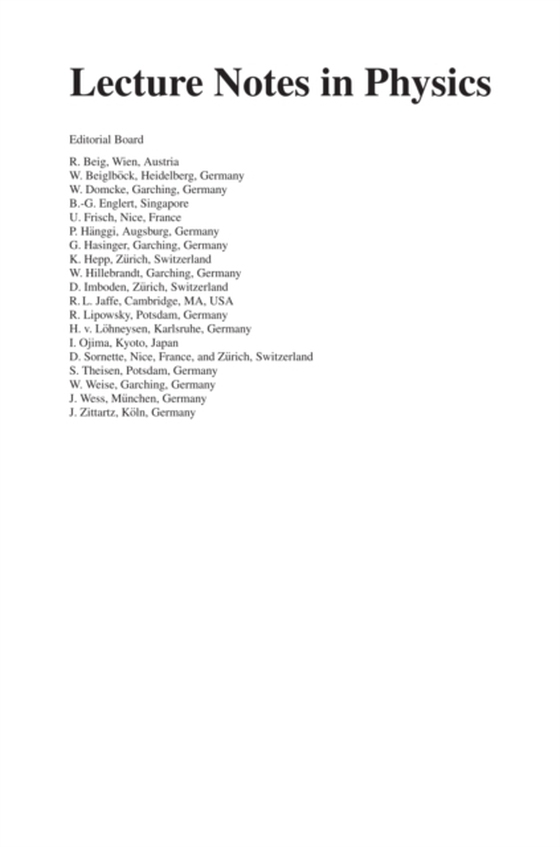
Symmetry Breaking e-bog
509,93 DKK
(inkl. moms 637,41 DKK)
The main motivation for such lecture notes is the importance of the concept and mechanism of spontaneous symmetry breaking in modern theoretical physics and the relevance of a textbook exposition at the graduate student level beyond the oversimpli?ed (non-rigorous) treatments, often con?ned to speci?c models. One of the main points is to emphasize that the radical loss of symmetric behaviour re...
E-bog
509,93 DKK
Forlag
Springer
Udgivet
31 oktober 2007
Genrer
PBG
Sprog
English
Format
pdf
Beskyttelse
LCP
ISBN
9783540735939
The main motivation for such lecture notes is the importance of the concept and mechanism of spontaneous symmetry breaking in modern theoretical physics and the relevance of a textbook exposition at the graduate student level beyond the oversimpli?ed (non-rigorous) treatments, often con?ned to speci?c models. One of the main points is to emphasize that the radical loss of symmetric behaviour requiresboth the existence of non-symmetric ground states and the in?nite extension of the system. The ?rst Part on SYMMETRY BREAKING IN CLASSICAL SYSTEMS is devoted to the mathematical understanding of spontaneous symmetry breaking on the basis of classical ?eld theory. The main points, which do not seem to appear in textbooks, are the following. i) ExistenceofdisjointHilbertspacesectors, stable under time e- lution in the set of solutions of the classical (non-linear) ?eld equations. Theyarethestrictanalogsofthedi?erentphasesofstatisticalmechanical systems and/or of the inequivalent representations of local ?eld algebras in quantum ?eld theory (QFT). As in QFT, such structures rely on the concepts of locality (or localization) and stability, (see Chap. 5), with emphasis on the physicalmotivations of the mathematicalconcepts; such structures have the physical meaning of disjoint physical worlds, disjoint phases etc. which can be associated to a given non-linear ?eld equation. The result of Theorem 5.2 may be regarded as a generalization of the criterium of stability to in?nite dimensional systems and it links such n stability to elliptic problems inR with non-trivial boundary conditions at in?nity (Appendix E).
 Dansk
Dansk

